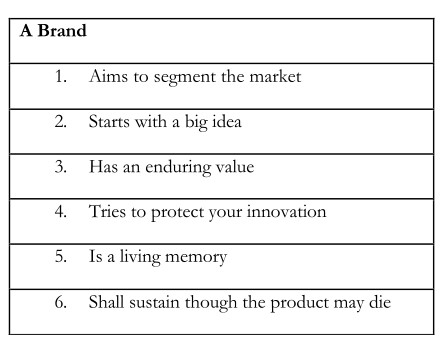As we studied in the previous lesson Brand facilitates consumers to ease decision-making and uncertainty because it encapsulates its identity, origin, specificity, guarantee and difference. In turbulent markets where choice is constantly evolving, brand provides a haven of stability, ensures an identity and promises of quality or guarantee.
Though products may change, the spirit of the brand remains the same. The brand owner is able to earn an easy recognition and image compared to owners of unbranded products. Thus, the value of creating a brand has been accepted in principle. And it is of late given a status of an intangible asset. Thus, there is not much dispute that a brand has a value, the problem lies in how to create such a brand.
Strategic Relevance of Branding
We can now say that Brand is much more than name per se or the creation of external indication that the product or service has received an organization’s imprint or its mark. Exhibit 38.1 outlines the strategic relevance and logic of branding.
Exhibit 38.1 Strategic Relevance and logic of Branding

A Brand Aims to Segment the Market – Brand building is part of a strategy aimed at differentiating the offering companies try to better fulfill the expectations of specific groups of customers. They do so by consistently and repeatedly providing combination of attributes – tangible, practical and symbolic, visible and invisible value – under conditions that are economically viable for the company. The company wants to leave its mark on a given field, and sets its imprint on the particular offering.
A Brand Starts with a Big Idea – The first task in brand building is defining just what the brand infuses into the product or service. Branding, however, is not based on what goes on, but what goes in. The result is an augmented product or service, which must be indicated in one way or other if it is to be noticed by your potential buyers, and if the you are to reap the fruits of its efforts before it is copied by others.
A Brand has an Enduring Value – If a brand were merely a label, then such product would lose its value as soon as it loses its sign of brand identification. Instead, it continues to incarnate the brand, the brand’s passing presence has transformed the product. This explains the value of Lux soap when it carries the HLL label for the past 75 years, similarly Adidas shoes, stripped of its name, will hardly see much consumer pull. They are worth more than counterfeit imitations because the brand image is present even when it cannot be seen. In contrast, though the brand level may appear on an imitation, it will actually miss the undercurrent of consumer’s personal attachment with the offering.
A Brand Tries to Protect Your Innovation – Brands become known through the products they create and bring on to the market. Whenever a brand innovates, it generates ‘me-too-ism’. Any progress made quickly becomes the standard to which buyers become accustoms to. Competing brands most often follow through and at times bring out improved versions, as they do not want to fall beneath the market expectations. For a short time, an innovative brand enjoys monopoly, but it will be a fragile one unless the innovation is patented or patentable. In other words, the role of brand name is to protect the innovation – it creates a ‘mental’ patent. This is nothing other than the just reward for innovation, making an effort, and taking risks. A snapshot of a given market will often show similar products. A dynamic vision, however reveals given market will often show similar products. A dynamic vision, however, reveals who has innovated and pulled the competition along in the wake of its success.

